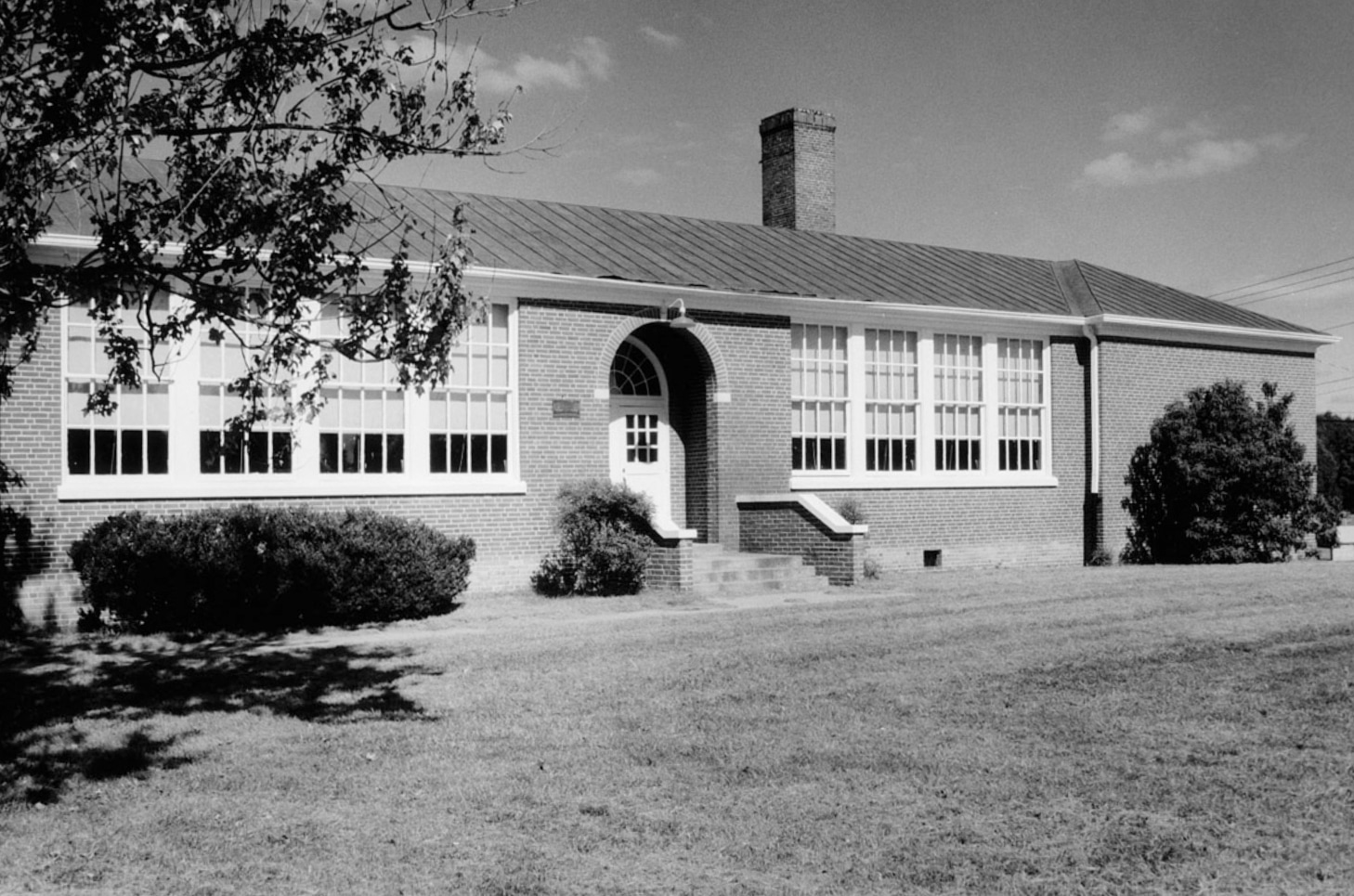RESOURCES
PLACES
Robert Russa Moton High School
Robert Russa Moton High School, located in Farmville, Virginia, was established in 1939 as the only high school for Black students in Prince Edward County during the era of segregation. Named after Robert Russa Moton, a distinguished African American educator and successor to Booker T. Washington as principal of Tuskegee Institute, the school quickly became a symbol of both educational aspiration and racial inequality.
From its inception, Moton High School was underfunded and overcrowded compared to the white schools in the county. By the late 1940s and early 1950s, conditions had deteriorated so badly that the school operated with tar paper-covered wooden shacks known as “temporary classrooms” and lacked proper heating, bathrooms, and other basic facilities. Despite these hardships, Moton’s teachers and students worked hard to create a thriving educational environment.
On April 23, 1951, 16-year-old student Barbara Johns led a strike to protest these conditions, launching what would become one of the pivotal moments in the civil rights movement. With support from the NAACP, the students’ efforts led to the court case Davis v. County School Board of Prince Edward County, which was eventually bundled with Brown v. Board of Education and heard by the U.S. Supreme Court. The 1954 Brown decision declared segregated public schools unconstitutional.
Rather than integrate, Prince Edward County chose to close its entire public school system from 1959 to 1964, making it the only county in the nation to take such drastic action. During this time, Moton High School was shuttered, and Black students were left without formal education unless they moved away or attended private or church-sponsored schools.
Today, the former Robert Russa Moton High School building is preserved as the Robert Russa Moton Museum, a National Historic Landmark and center for education and dialogue about civil rights in education. It stands as a powerful monument to the courage of students who demanded equality and helped change the course of American history.
Timeline: Robert Russa Moton High School
1939 – School Opens
Robert Russa Moton High School is established as the only high school for Black students in Prince Edward County, Virginia. Named after a prominent African American educator, the school was built to enforce “separate but equal” doctrine—but from the start, it was severely underfunded and overcrowded.
1940s–1950s – Overcrowding and Inequality
Student enrollment increases, but the county refuses to build adequate facilities. Tar paper shacks—nicknamed “chicken coops”—are used as makeshift classrooms. The school lacks essential resources: no gym, no proper science labs, and limited library access.
April 23, 1951 – The Student Strike
Led by 16-year-old Barbara Johns, over 450 students organize a walkout to protest conditions at Moton. The strike gains national attention and inspires legal action. It becomes the only student-initiated case folded into Brown v. Board of Education.
1951–1954 – Davis v. Prince Edward County
The NAACP supports a lawsuit filed by Moton students and their families. The case becomes part of the landmark Supreme Court case Brown v. Board of Education, which declares segregation in public schools unconstitutional in 1954.
1959–1964 – School Closures
Rather than integrate, Prince Edward County closes its entire public school system. Moton High School is shut down. White students attend new private academies; Black students are left without formal education or are forced to leave the county.
1966 – Moton Reopens as Elementary School
The building reopens under a desegregated system as an elementary school. Though integrated, scars from the closures remain.
1993 – Preservation Efforts Begin
Community members and activists organize to preserve the original Moton High School building. It is recognized for its historic significance in the civil rights movement.
2001 – Moton Museum Established
The building becomes the Robert Russa Moton Museum: A Center for the Study of Civil Rights in Education, dedicated to telling the story of student activism and equal education.
1998–Present – National Recognition
The site is listed as a National Historic Landmark and becomes a key stop on Virginia’s Civil Rights Trail. Visitors learn about the courage of the Moton students and the legacy of their actions in the fight for educational justice.
Present – UNESCO World Heritage Site Nomination
Today, the staff of the Moton Museum area working on the nomination for the Robert Russa Moton School to become a World Heritage Site.
